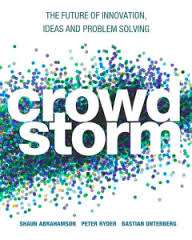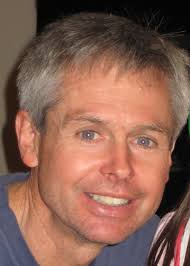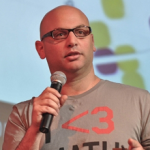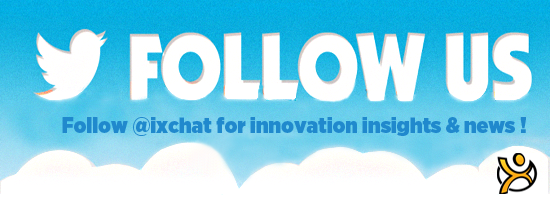The Crowdstorm Effect
 Getting Very Big Ideas (and More) From Very Big Crowds
Getting Very Big Ideas (and More) From Very Big Crowds
This three-part series discusses how leading organizations are tapping external talent to not only find new ideas but also to get feedback on ideas. Regardless of how we define innovation, the talent to deliver it is now found within and outside our organizations. This is a given. The process to harness it is a work in progress. The material in this series comes from our recently published book, Crowdstorm: The Future of Innovation, Ideas and Problem Solving (written by  Shaun Abrahamson, Peter Ryder and Bastian Unterberg; published by Wiley).
Part 1: From Brainstorming to Crowdstorming
When we open up the innovation process to talent outside our organization we are trying to channel the abilities of a lot of people we don’t know, in the hope that a few of them have ideas we need. Crowdsourcing is the term most closely associated with the process. But over the last decade, many organizations have been not only sourcing ideas from crowds but also getting feedback on ideas.
Large organizations like GE, Starbucks and LEGO have pioneered more work with large online crowds, outside their organizations. Startups like Quirky, Localmotors and Giffgaff have built even more complex models to work with crowds, weaving them into the fabric of their business models to bring better products and services to market. They are leveraging the efficiency of the Internet coupled with innovative workflows to tap external talent anywhere at low cost; they are brainstorming at scale to find ideas and insights and select the best ideas. We call the intersection of lower transaction costs and brainstorming at scale enabled by online connections crowdstorming.
Crowdstorming is impacting how we organize projects with external talent and what processes we use to achieve exceptional results.
GE’s Ecomagination challenge is a case in point. In addition to the 4,000 ideas it received to innovate power grid technology, GE also discovered insights about the submissions and its brand from 80,000 comments on the ideas and 120,000 votes to help select the best. In the end, GE identified talent they could partner with — the innovative competition lead to GE’s investment in 22 startups. Lego’s Cuusoo platform receives product ideas from external innovators — lots of them; but, the Lego design and development team requires 10,000 external votes for an idea to vet the “best†ideas — the crowd filters which ideas the Lego team should look at. And, organizations like Starbucks are running challenges like the Betacup to not just develop a solution to paper cup waste, but also to begin a global conversation about the significant issue of paper cup waste.
Getting ideas, getting feedback, identifying talent to work with, filtering ideas, earning media, enabling stakeholders to select ideas to change the organization/stakeholder relationship — the crowd’s role and the crowdstorming process has become more complex as it has expanded to involve external talent in new ways.
Online Connections Enable The Shift
Seventy-five years ago, the British economist, Ronald Coase, suggested that high transaction costs – the overhead to find, recruit, negotiate and contract with talent—required organizations to bring the best talent in house. While Coase’s equation still holds true, the Internet has allowed organizations to revisit under what conditions they want and need full time employees. When we have the ability to efficiently tap resources anywhere, anytime at low cost, new opportunities emerge.
About a decade after Coase’s analysis, Alex Osborn from the advertising firm BBDO (O is for Osborn) challenged the notion that individual creative genius was responsible for all the great ideas in the advertising world. Instead of the single creative genius working on a problem, Osborn proposed “storming†challenges to get ideas. He suggested putting people together in a room – typically 5 to 10 – to brainstorm.
But, interestingly, Osborn broke brainstorming into two parts: The first was the “thinking up†– the generation of ideas. The second part – the part that is often overlooked — is the weighing of ideas. The mechanisms for widespread evaluation were limited during Osborn’s time: the distribution and collection of feedback through wooden in/out boxes was not particularly efficient.
Of course, brainstorming is now part of corporate parlance, and variations of Osborn’s process are used by many organizations to help innovate today. But, the Internet also massively influenced brainstorming. What happens when you can brainstorm to get ideas not with 10 people but 100 or 1,000? And, what happens when you can get feedback on ideas and ratings on ideas from thousands or tens of thousands of people? You are crowdstorming.
Crowdstorming patterns are evolving quickly from simple searches for ideas that often underpin open innovation strategies, to more complex interactions where crowds take on multiple specialized tasks. We see new ways for organizations to engage with crowds and open up their innovation processes. In Part 2 of this series, we will look at how firms are organizing work environments using crowds; and, we will look at key processes — framing questions for virtual communities, recruiting and motivating talent and building coalitions — that make crowdstorming, effective.
image credit: wiley.com
Wait! Before you go…
Choose how you want the latest innovation content delivered to you:
- Daily — RSS Feed — Email — Twitter — Facebook — Linkedin Today
- Weekly — Email Newsletter — Free Magazine — Linkedin Group
Peter Ryder is co-author of Crowdstorm: The Future of Innovation, Ideas and Problem Solving (Wiley). He has had a successful career with Deloitte, CSC, and Accenture helping organizations use technology to transform their operations. Today he works as an investor and advisor.
is co-author of Crowdstorm: The Future of Innovation, Ideas and Problem Solving (Wiley). He has had a successful career with Deloitte, CSC, and Accenture helping organizations use technology to transform their operations. Today he works as an investor and advisor.
 Shaun Abrahamson is co-author of Crowdstorm: The Future of Innovation, Ideas and Problem Solving (Wiley). Shaun was an early stage investor and advisor with MIT Computer Aided Design Lab and the Berlin School of Creative Leadership. Today he is Co-founder & Managing Partner at Urban.Us and an Advisor to Future of Urban Development & Services Initiative, World Economic Forum/
Shaun Abrahamson is co-author of Crowdstorm: The Future of Innovation, Ideas and Problem Solving (Wiley). Shaun was an early stage investor and advisor with MIT Computer Aided Design Lab and the Berlin School of Creative Leadership. Today he is Co-founder & Managing Partner at Urban.Us and an Advisor to Future of Urban Development & Services Initiative, World Economic Forum/
NEVER MISS ANOTHER NEWSLETTER!
LATEST BLOGS
Three things you didn’t know about credit cards
Photo by Ales Nesetril on Unsplash Many of us use credit cards regularly. From using them for everyday purchases to…
Read MoreFive CV skills of a business-minded individual
Photo by Scott Graham on Unsplash The skills listed on a CV help employers quickly understand your suitability for a…
Read More


